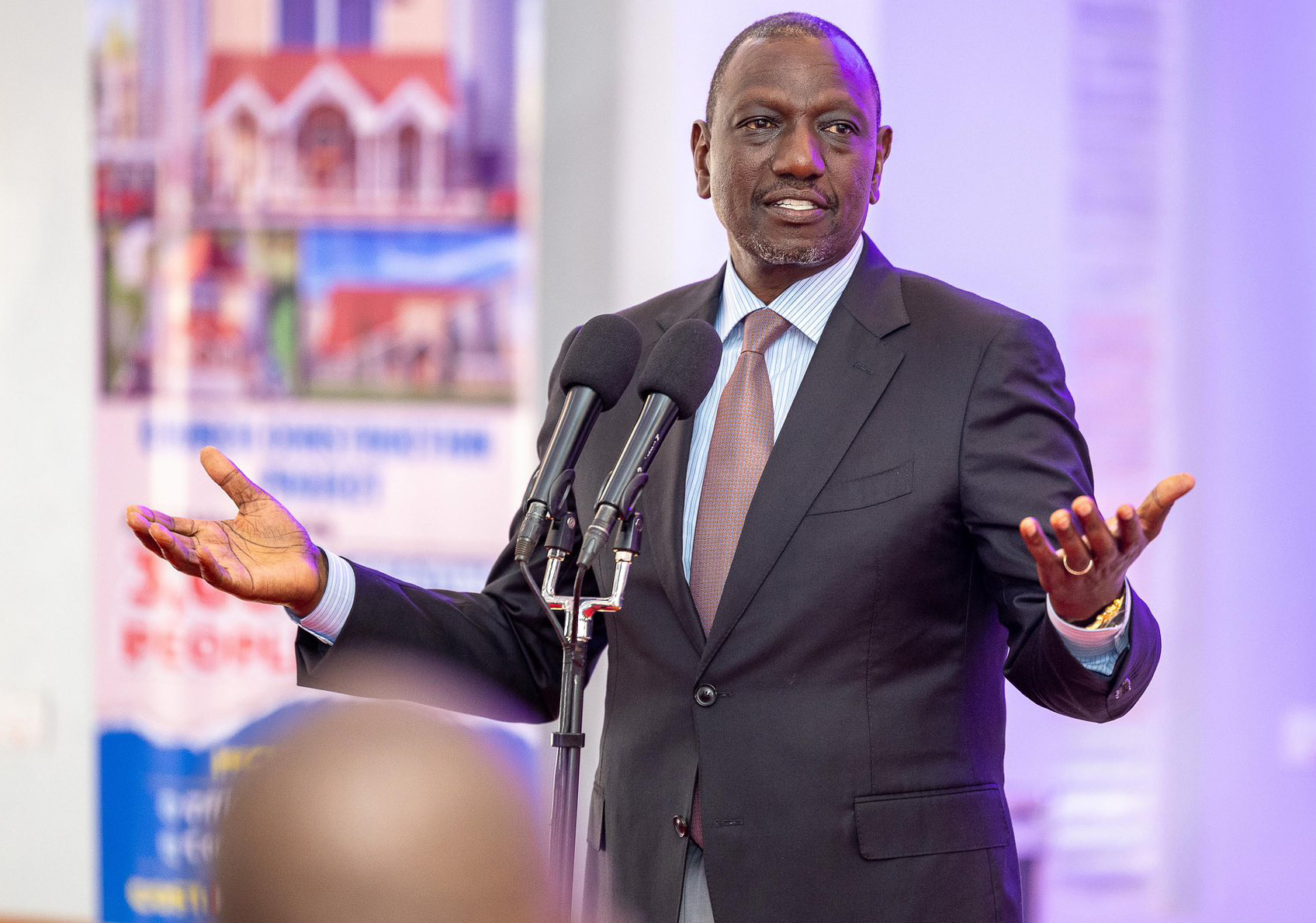

When President Ruto took office on September 13, 2022, the Country was emerging from economic devastation brought about by a global health pandemic (COVID-19), drought, high interest rates, and a crippling debt crisis.
Bold reforms have laid a strong foundation for far-reaching socio-economic transformation by the Ruto administration.
A lot has changed between September 2022 and July 2025. To begin with, Kenya’s economy is growing faster at 5% compared to the global average of 3.3% and 3.8 % in Africa.
Our country’s Gross Domestic Product (GDP) hit Ksh. 17 trillion in May 2025, positioning Kenya as the largest economy in East and Central Africa, the 6th largest in Africa, and the 3rd largest in Sub-Saharan Africa.
This is due to several factors, as elucidated below. Inflation dropped from 9.6% in October 2022 to 3.8% in May 2025. The Kenya Shilling made a remarkable recovery from Ksh. 162 to Ksh. 129/USD. Imported goods such as medicine, fuel, and household goods became cheaper.
Furthermore, the Central Bank rate decreased from 13% to 9.75%, significantly reducing the cost of credit.
In addition, the foreign exchange reserves grew from $6.5 billion to $ 11.8 billion. This growth extended import cover from two and a half months to five months. Amazingly, and as promised, 7 million Kenyans have since been delisted from the Credit Reference Bureaus (CRBs).
These fellow Kenyans can now access credit previously inaccessible due to the CRB listing.
The impact has
been phenomenal. It has led to a lower cost of living, better access to credit for ordinary individuals, a stronger and stable currency for imports and trade, and a strong
foundation for transformative change across multiple sectors of the economy.
Health and education are the social enablers that form the bedrock of national transformation.
For example, health is already shifting from being seen as a luxury to becoming a right for all, with over 24.9 million Kenyans having been registered for universal health coverage. Education has shifted from being exam-driven to focusing on skills, talent, and market-ready training.
This is the new Kenya, where every child has access to quality healthcare from birth, growing and learning free from the threat of illness.
In Kenya, our education system aligns with the needs of the workforce, equipping learners to drive innovation, solve real-world problems, and elevate our nation’s standing in the global arena.
The right to healthcare as enshrined in Article 43 of the constitution is being realised, with the numbers rising from 7 million under NHIF.
TaifaCare covers free primary healthcare, emergency services, critical and chronic illness and insured secondary care.
Access is instant, and there is no waiting period.
The 2.75% income contribution is now fairer for the underprivileged as it's uniform for all. To reduce health risks, 107,831 community health promoters have been deployed nationwide. They have already visited 8.3 million homes and made 7.2 million follow-up visits.
Health digitisation has also significantly reduced fraud in the billing system and improved efficiency in service delivery.
Consequently, by mid-2025, 5.75M people were treated under Taifacare, with 4.5 M having accessed basic care, 2.2 M hospital bills covered, and a total of KSh49.2 Billion mobilised across SHA and SHIF.
The impact has been phenomenal, with a significant impact, as many Kenyans are now able to avoid suffering because they can’t afford to pay hospital bills, and families are being cushioned from financial ruin due to hospital bills.
As a result, more diseases are now being diagnosed early at the household level, contributing to progress towards universal health coverage, fair and inclusive coverage, and a healthier, more productive nation.
In Education, the major problems affecting learning include: underfunded schools, teacher shortages, overcrowded classes, poor infrastructure and a curriculum that is not tailored for today’s marketplace.
Today, 76,000 new teachers have been hired. In addition to this, new jobs, this bold investment has significantly improved the teacher-to-learner ratio to 1:29 from 1:45 in 2022, meaning that 26 more learners have greater access to a teacher, resulting in better learning outcomes.
By 2027, Kenya is projected to hire an additional 40,000 teachers, thereby achieving the UNESCO-recommended teacher-to-learner ratio of 1:25 for primary schools. Moreover, 23,800 classrooms have been built, creating space for over 900,000 learners and securing better access to education.
Higher Education Financing
scholarships and loans are now based on need, prioritising needy students under the reformed New Funding Model, thus implementing equal opportunities for Kenyan learners, by uplifting underprivileged and vulnerable students.
The Competence-Based Curriculum (CBC) has now been upgraded to C-BET, aligning learning with job skills to meet industry requirements. Our Education system now prioritises skill over writing exams.
The system allows learners to hone their skills early. In addition, 1,600 science labs are under construction, and a more innovative bursary system is being rolled out to ensure that the poor aren’t left out, with overhauling of the means-testing instruments to ensure accurate placement and equity.
As a result, the Country is creating a pipeline of learners with the relevant skills for competitive positioning of human resources for national development.
Students are now learning in a better environment with adequate teaching and learning resources, and equal access to university education regardless of economic background, and more practical skills are being taught for jobs and innovation.
The transformation continues












